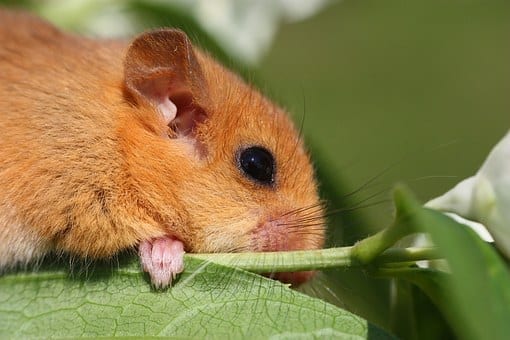Hazel Dormouse
Pathew. Muscardinus avellanarius
The hazel dormouse is Britain’s only native dormouse. Technically, dormice are not mice, having a completely furry tail unlike a mouse’s scaly tail. Dormice belong to the same suborder as beavers and squirrels. They have golden-brown fur, large black eyes and range in size between 6 – 9 cm. Dormice adapt their diet to the season. In spring they feed on flowers, enjoying hawthorn pollen and honeysuckle nectar. In summer, their diet includes insects. In autumn they feed on fruits and nuts, doubling their fat reserves to ensure a successful hibernation. Hazelnuts are their preferred autumn foodstuff, the tell-tale round hole in the discarded shells a clue to their presence. Every summer dormice have a litter of up to five young, raised in nests woven from grasses, leaves and bark that are built in trees or hedges. In the autumn dormice build cosy nests on the ground under leaf litter or log piles. They hibernate curled up in balls, with their tail curled around their head.
A report published in 2019 by People’s Trust for Endangered Species has revealed that Britain’s population of hazel dormice has declined by 51% since the millennium. This is due to the loss and fragmentation of their natural woodland and hedgerow habitats, as well as climate change which disturbs their hibernation.
Status at Cambrian Wildwood: Present

